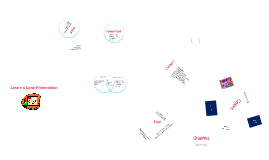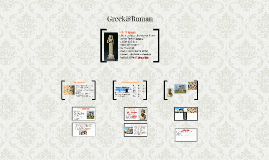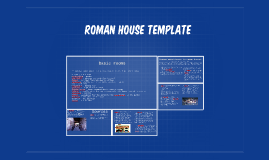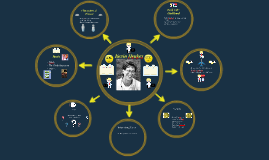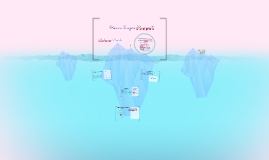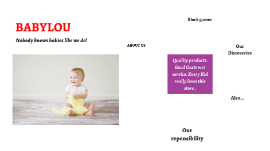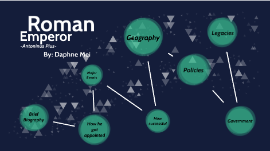Roman Emperor Powerpoint- BLA 2019
Transcript: Emperor By: Daphne Mei Roman -Antoninus Pius- Brief Biography Antoninus, in full, Titus Aurelius Fulvus Boionius Arrius Antoninus, was descended on his father's side. Antoninus was the only child of Aurelius Fulvus, his biological father. He was a member of the Nerva-Antonine dynasty and the Aurelii. He acquired the name Pius after his accession to the throne, either because he compelled the Senate to deify his adoptive father Hadrian, or because he had saved senators sentenced to death by Hadrian in his later years. He was adopted by emperor Hadrian on February 28, 138 CE. And in 138, he succeeds Hadrian after he passed on July 10th 138 (about 4 months after being adopted), and became the 15th Roman emperor. About Antoninus Pius Birth Info Antoninus Pius was born on September 19, 86 AD in Lanuvium (20 miles south of Rome). The young Antoninus was raised on a large estate at Lorium, first by his paternal grandfather and later by his maternal grandfather. About Antonius Birth Death Info Antoninus Death Antoninus died on March 7, 161 AD. After he had eaten too freely some Alpine cheese at dinner, he vomited during the night and was taken with a fever the next day and sadly died a few days after. Antoninus died at Lorium, an ancient village of ancient Etruria, Italy, along the Via Aurelia, 19 km west of Rome. When he died, he was about 75 years old. Family Antoninus Family Antoninus fathers were Hadrian and Aurelius Fulvus, III. His mother was Arria Fadilla. Antoninus had 2 sons and a daughter. One of his sons were called Lucius Verus and he was the co-emperor of Rome with his adoptive brother Marcus Aurelius from 161 until his own death in 169. His daughter was called Faustina the Younger which was a Roman Empress and wife to her maternal cousin Roman Emperor Marcus Aurelius. Antoninus spouse/wife was called Faustina the Elder (Faustina I). He may have more than just his three children, such as Marcus Aurelius Fulvius Antoninus, Marcus Galerius Aurelius Antoninus, Aurelia Fadilla, and Faustina II, but it is not proven if they were really his other children. Prior Jobs Prior Jobs of Antoninus His prior jobs before he was the emperor were as a quaestor in 111 AD, a praetor in 117 AD, consul in 120 AD, and a proconsul in 135/136 in Asia. Since several members of his family had served as consuls of Rome, it enabled him to serve as quaestor and praetor before becoming Vir Consularis, a judicial appointment in Umbria and Etruria. A quaestor is a Roman magistrate (one who conducts a court that deals with minor offenses and holds hearings for more serious ones), responsible for fiscal (financial matters) administration. In other words, the word quaestor means "the one who asks questions." A quaestor had no bodyguard but was allowed to wear a purple-bordered toga. What is a Quaestor? Quaestor A praetor is a Roman magistrate, responsible for the administration of justice. Put it differently, it indicates the man who 'goes before the others'. A praetor had six bodyguards and was allowed to wear a purple-bordered toga. What is a Praetor? Praetor A consul is a Roman magistrate, comparable with a prime minister or a president. Namely, the oldest and most important magistracy who have twelve bodyguards and is allowed to wear a purple-bordered toga like the quaestors, the praetors, etc. What is a Consul? Consul A proconsul is someone who acted as if he were an official magistrate. He could have all the powers of a consul, but was, in fact, a former consul whose term in office was prolonged (lengthy). They served typically twelve months. This magistracy was 'invented' in the last quarter of the fourth century BCE (Before Common Era). What is a Proconsul? Proconsul Antoninus was elected because he became a trusted advisor to Emperor Hadrian. The emperor (Hadrian) had adopted Lucius Aelius as his successor. Aelius was supposed to be the heir of the throne after Hadrian died, but he died before Hadrian. After Lucius' death, he was replaced by Antoninus Pius, who succeeded Hadrian the same year. How was he elected? How he got appointed There were many contemporary events. In 141, his wife, Faustina the Elder, passed away which caused Antoninus to be genuinely shakened. He also built the Temple of Faustina in the Forum, which can still be seen today. In 142, the wall of Antoninus was built in Britain. In 151, an earthquake destroyed Mytilene and Smyrna. And in 145, his daughter Faustina the Younger got married Marcus Aurelius. What was going on? Major Events The Temple of Antoninus and Faustina is an ancient Roman temple in Rome, which was later converted into a Roman Catholic church, the Chiesa di San Lorenzo in Miranda or simply "San Lorenzo in Miranda". It is located in the Forum Romanum, on the Via Sacra, opposite the Regia. Temple of Faustina [and Antoninus] Temple of Faustina Mytilene was a city in Greece. Mytilene is the capital city and port of the island of Lesbos and also the capital and administration center of the North






